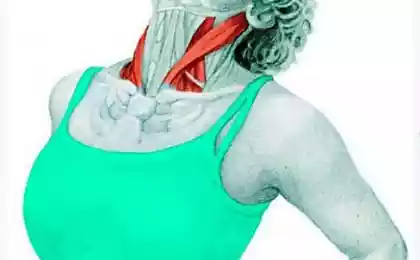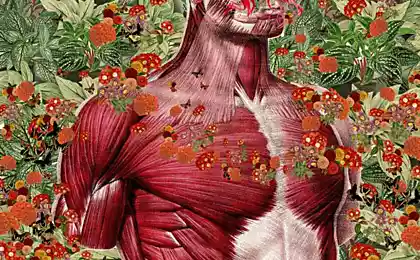400
Conscious sports: the mechanism of each muscle

In order to take one step, the person needs to use about 200 muscles
I sometimes, but what can I say, almost always, sad to watch the suffering of athletes who can't improve, because they do not understand the basic laws through which they move. Physics, biomechanics, physiology. Accordingly, in training, despite the high involvement and well-written program not aware of why they do it and what to improve. Or, based on the analysis of the situation, to have the courage to accept the fact that they've reached their limit that Amateur sports are of course less.When I started Jogging, I was well aware of the physical basics of running and had a vast experience thorough application of l/a at a decent level, so it was quite easy. moreover, the physics are quite trivial and the whole exercise is intuitive. Then I seriously started great, again the situation is such that it is necessary to examine the issue — there are already quite contraintuitive technique, and the physics non-trivial and very non-linear. In addition, a sensitive issue for all cyclists, who travel at their own expense — the price of the equipment for making good results. Here the area is generally painful for many, especially considering how she littered with spurious information through excessive efforts sellers that sell Equipe expensive. And how easy here to pay exorbitant prices for junk and not to buy the right.
So I, wanting to go faster, delved into the foundations of the theory of Cycling, bought the book Bicycling Science publishers MIT (not the typical popular book, and the book, many physicists, often vzryvaet the brain), was interested in the possibilities of scientific work in the field of Cycling. Plucked appropriate outfit, everything is set up, training went like clockwork, because it is understood.
Now came the time to swim, again trying to process the research on the biomechanics and hydrodynamics of swimming, again bought the book The New Science of Swimming. Psychological moment still — it turns out badly, slow, uncertain movement. In General it goes all hard and then there is the internal struggle, the unwillingness to return to the water, because remember, that is constantly a disproportionately hard and the progress slow, lazy brain includes psychological protection, but it is about the psychological preparation and maturity of the individual, the questions of this post are not related. But you understand clearly why and what to do, have the methods of control, certainly much easier than doing it blindly.
All you need to do to improve in any sport (except, of course, diligence, determination and perseverance — the ability to repeat the attempt in spite of repeated failures) it is necessary to understand:
1. The main forces that must be overcome when moving, the mathematical laws which they obey;
2. on the basis of the first paragraph — main istochniki costs and losses of energy;
3. in this regard, to identify limiting factors as external (environment properties), so vnutrennie — physical/physiological constraints of the expected limit values for people in General and for themselves personally;
4. in the first place (and it gives in my experience over 80% success rate) should be the main source of resistance, eliminating waste and raising efficiency;
5. after that there are subtleties, as the rule is the same work with the main sources of resistance, plus secondary sources of resistance and hone motor skills.
In order to improve on the part of the athlete, always an important biomechanics of the exercise (technique), PFD and equipment/interaction with external forces. And there is something more or less important. For better movement in space important all parameters collected together, especially in the case of the complex relationship between them, when the improvement of some parameters leads to deterioration of others and need to optimize in all directions. Plus the honing of motor skills, in cyclic types it is necessary to perform precise repetitive movements without trembling in the muscles, wiggle and other extraneous movements that do not result directly or indirectly to move forward.
And this latter should be perhaps the most difficult — constant "presence" in the training process. All movements are done responsibly, with an awareness of where goes the hand, moves the foot, where it creates stress where there was relaxation, etc. And how this movement fits in with what this bill has to say the appropriate section of sports science. published
P. S. And remember, only by changing their consumption — together we change the world! ©
Source: arky-titan.livejournal.com/
Glenn Doman: to Give children unlimited opportunities in life
The juice of nettle: amazing healing properties























